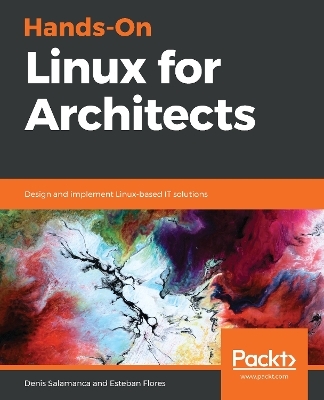
Hands-On Linux for Architects
Packt Publishing Limited (Verlag)
978-1-78953-410-8 (ISBN)
Explore practical use cases to learn everything from Linux components, and functionalities, through to hardware and software support
Key Features
Gain a clear understanding of how to design a Linux environment
Learn more about the architecture of the modern Linux operating system(OS)
Understand infrastructure needs and design a high-performing computing environment
Book DescriptionIt is very important to understand the flexibility of an infrastructure when designing an efficient environment. In this book, you will cover everything from Linux components and functionalities through to hardware and software support, which will help you to implement and tune effective Linux-based solutions.
This book gets started with an overview of Linux design methodology. Next, you will focus on the core concepts of designing a solution. As you progress, you will gain insights into the kinds of decisions you need to make when deploying a high-performance solution using Gluster File System (GlusterFS). In the next set of chapters, the book will guide you through the technique of using Kubernetes as an orchestrator for deploying and managing containerized applications. In addition to this, you will learn how to apply and configure Kubernetes for your NGINX application. You’ll then learn how to implement an ELK stack, which is composed of Elasticsearch, Logstash, and Kibana. In the concluding chapters, you will focus on installing and configuring a Saltstack solution to manage different Linux distributions, and explore a variety of design best practices. By the end of this book, you will be well-versed with designing a high-performing computing environment for complex applications to run on.
By the end of the book, you will have delved inside the most detailed technical conditions of designing a solution, and you will have also dissected every aspect in detail in order to implement and tune open source Linux-based solutions
What you will learn
Study the basics of infrastructure design and the steps involved
Expand your current design portfolio with Linux-based solutions
Discover open source software-based solutions to optimize your architecture
Understand the role of high availability and fault tolerance in a resilient design
Identify the role of containers and how they improve your continuous integration and continuous deployment pipelines
Gain insights into optimizing and making resilient and highly available designs by applying industry best practices
Who this book is forThis intermediate-level book is for Linux system administrators, Linux support engineers, DevOps engineers, Linux consultants or any open source technology professional looking to learn or expand their knowledge in architecting, designing and implementing solutions based on Linux and open source software. Prior experience in Linux is required.
Denis Salamanca is a technology enthusiast living in Costa Rica with his fiancée and step-son. He has been working in IT since he was 20 and has worked for the most influential and leading companies in the industry, including VMware, Microsoft, and Hewlett-Packard Enterprise. He currently holds more than 10 technical certifications across different fields, such as cloud, storage, Linux, Docker, and virtualization. He has also participated in the development of Linux certifications and is part of the CompTIA Linux Subject Matter Experts and Technical Advisory Committee. His love for technology has driven him to work in different positions and fields across his career, and this has helped him to develop an understanding about the different points of view that a technical solution requires. Esteban Flores has been meddling with computers since he was 8 years old. His life as an IT expert began when he lost a lot of important data belonging to his family by saying he was "fixing the computer." He's worked for top-tier companies, including Hewlett-Packard Enterprise, VMware, Akamai, and Microsoft. With 10 years' experience, his passion for cutting-edge technology has driven him to work on different roles during his professional career. Storage technologies have always been his forte, focusing mostly on performance tuning and optimization. A photographer during his free time, he's been doing Linux-related things since his first job, finding amazement in its flexibility to run from a small laptop all the way up to the world's fastest supercomputers.
Table of Contents
Introduction to design methodology
Defining GlusterFS Storage
Architecting a storage cluster
Using GlusterFS on cloud infrastructure
Analyzing Performance in a Gluster system
Creating a Highly available self-healing Architecture
Understanding the core components of a Kubernetes cluster
Architecting Kubernetes on Azure
Deploying and Configuring Kubernetes
Monitoring with ELK stack
Designing an ELK Stack
Using Elasticsearch, Logstash, and Kibana to Manage Logs
Solving Management Problems with Salty Solutions
Designing a salt solution and Installing the software
Design Best Practices
Assessments
| Erscheinungsdatum | 07.05.2019 |
|---|---|
| Verlagsort | Birmingham |
| Sprache | englisch |
| Maße | 75 x 93 mm |
| Themenwelt | Informatik ► Betriebssysteme / Server ► Unix / Linux |
| Technik ► Architektur | |
| ISBN-10 | 1-78953-410-0 / 1789534100 |
| ISBN-13 | 978-1-78953-410-8 / 9781789534108 |
| Zustand | Neuware |
| Haben Sie eine Frage zum Produkt? |
aus dem Bereich


